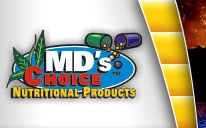Vitamins
![]()
| Folic Acid |
Structure
Functions
Sources
Metabolism
Requirements
Deficiency
Toxicity
1946 Angler reported synthesis of folic acid
- Different THF derivatives (Figure 1) participate as coenzymes in one-carbon donating/receiving reactions
- Folate as Ns, NTM methylene THF is required for synthesis of serine from glycine
- Regeneration of methionine from homocysteine involves folate as Ns methyl THF
- Metabolism of histidine through urocanic acid and formiminoglutamate (FIGLU) to yield glutamic acid requires THF
- THF derivatives are involved in purine and pyrimidine synthesis so folate is essential for cell division
- Conversion of deoxy UMP to deoxy TMP which is required for DNA synthesis
- N10 formyl THF is needed for purine ring formation
- N5, N10 methylene THF is involved in production of glycine for synthesis of heme
- Interaction of folate and vitamin B12 in anemia (Folate trap hypothesis)
- Methyl folate, the dominant form in the body's folate pool, is metabolically inactive (except as a methyl donor to convert homocysteine to methionine)
- Methyl folate can be returned to the active folate Pool only via a B12 dependent step
- In absence of sufficient vitamin B12 methyl folate accumulates
- A vitamin B12 containing enzyme transfers a methyl group from methyl folate to homocysteine converting it to methionine
- This regenerates THF from which 5, 10-methylene THF is made
- 5, 10-methylene THF delivers its methyl group to deoxyuridylate converting it to thymidylate which is necessary for synthesis of DNA
- Deficiency of either B~2 or 5, 10-methylene THF inhibits adequate DNA synthesis causing many hematopoietic cells to die in the bone marrow; anemia results
- Folates are most abundant in plant food sources, especially when raw
- Green leafy materials
- Whole grains and cereal byproducts
- Beans
- Organ meats and animal byproducts
- Digestion, absorption, transport
- Folate in foods is hydrolyzed to the monoglutanate form
- g-glutamylcarboxypeptidases (also called conjugases)
- Folate is transported across cell membranes by a carrier system believed to be saturable and pH, energy, and Na dependent
- Absorption is most efficient in the jejunum
- In the intestinal cell, folate is reduced to THF and methylated to N5 methyl THF
- Most of the folate in portal circulation is N5 methyl THF
- Within the liver, folate is present as about 33% THF, 37% N5 methyl THF, 23% N10 formyl THF and 7% as N5 formyl THF
- In blood, folate is found as monoglutomate, 2/3 bound to protein and 1/3 free
- Folate is transported into tissue cells by a carrier mediated process that may or may not require ATP
- Within cells THF is converted into a polyglutamate form to become a functional coenzyme
- Excretion
- Normally, the body tenaciously retains absorbed folate
- Very little is excreted in urine
- Folate binding proteins
- Tubular resorption in kidney
- Although much of absorbed folate is secreted by liver into bile, it is reabsorbed
- Recommended allowances
- Pig 0.5-2 mg/Kg
- Chick 1 mg/Kg
- Human 0.4-0.8 mg/day
- Factors affecting requirement
- Conjugase required for cleaving polyglutamate into monoglutanate form of folate is inhibited by several factors
- Zinc deficiency
- Chronic alcoholism
- Inhibitors in legumes, lentils, cabbage and oranges
- Inflammatory bowel disease
- Achlorhydria (insufficient HCL in gastric juice)
- Malignancies
- Oral contraceptives
- Anticonvulsants used in treatment of epilepsy
- Conjugase required for cleaving polyglutamate into monoglutanate form of folate is inhibited by several factors
- Megaloblastic, macrocytic anemia in most species
- Release into the circulation of large, immature ethrocytes, often containing excess hemoglobin
- Also occurs due to a deficiency of vitamin B12
- Folate deficiency is suspected in the initiation of cancer
- May be a risk factor for cardiac disease
- Plasma homocyst(e)ine levels may be increased in the presence of decreased plasma folate
- Increased neural tube defects in pregnant woman (see J. Am. Coll. Nutr. 15:121. 1996)
- Folate supplements exceeding .4 mg/day are considered pharmacologic
- Some reports suggest no adverse effects of 10 mg/day for 5 years
- Other studies indicate 15 mg/day is toxic in same individuals
- Insomnia
- Malaise
- Irritability
- Diminished Zn status
- Gastrointestinal problems
- Folate supplementation can mask vitamin B12 deficiency
- Alleviates megaloblastic anemia due to vitamin B12 deficiency
- Fails to prevent neurologic damage due to vitamin B12 deficiency
![]()
Vitamins

For individual consultation or questions about our products, call
1-800-628-0997
Click Here for a Printable Version of This Page
